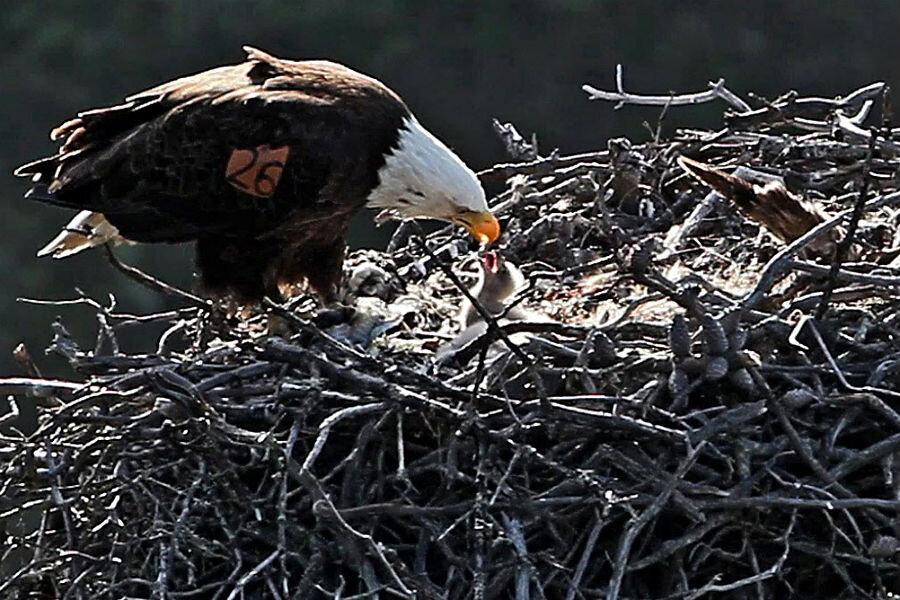A California comeback for the bald eagle?
Loading...
On an island off the coast of southern California, two bald eagles have each found a mate.
One couple may not seem significant in the animal world. But it represents a significant success in saving a species that was on the brink of disappearing from the country it symbolizes.
These eagles are the first nesting pair found on San Clemente Island in over 50 years.
By the early 1960s, bald eagles had vanished from California's Channel Islands, eight islands clustered together just off the coast near Los Angeles. Today, eagle recovery efforts have turned five of these islands back into homes for the birds.
But scientists and conservationists aren't stopping at that. “This news is very gratifying,” said Peter Sharpe, an ecologist working for eagle restoration with the Institute for Wildlife Studies in a news release. “I expect to see bald eagles return to all eight of the Channel Islands within a few years which will mark yet another milestone in their successful recovery."
How did they get there?
The avian couple found on San Clemente Island is the result of explicit efforts to restore bald eagles to the Channel islands.
The female was born in 2004 in Juneau, Alaska. Biologists transferred her from her nest and released her on Santa Cruz Island, another member of the Channel islands, as part of a recovery effort funded by the Montrose Settlements Restoration Program.
A few years later, her mate emerged from his shell in an artificial incubation facility on Santa Catalina Island. He was then placed in a nearby nest to be fostered in the wild.
Now the two have established a nest together on the previously eagle-less San Clemente Island. Although bald eagles mate for life, researchers have yet to see any chicks from this pair.
Bald eagles faced extinction for centuries
Soon after the United States declared independence from England, the bald eagle was adopted as the national bird. Scientists with the US Fish and Wildlife Service estimate that in 1782, there were about 100,000 nesting bald eagles in what is today the continental United States.
In 1963, researchers documented just 487 nesting pairs in the country.
Beginning in the late 1800s, that original population began to decline. Farmers sometimes saw eagles as a threat to livestock and would shoot them down as protection. Also, as human populations expanded in the US, the habitats where bald eagles could nest decreased.
By 1940, the US Congress addressed the issue by passing the Bald Eagle Protection Act. This banned any killing, selling or owning of the eagles, and in doing so labeled the animal as facing a threat of extinction.
But just as the federal government was moving to protect them, bald eagles were beginning to face another danger.
The pesticide DDT, used heavily in the 1940s and 1950s, leaked into water holding fish that made up bald eagles’ meals. These fish absorbed the chemicals, becoming a toxic meal for the birds.
But DDT didn’t kill the bald eagles outright. Instead, it weakened the eggshells they produced, making a successful hatching of chicks rare.
Researchers blame DDT for the 1960s absence of bald eagles in the California Channel Islands.
Success around the California Channel Islands
The efforts to restore the bald eagle population in these islands began in 2002 with the first release of chicks. Scientists released 61 chicks on the northern Channel Islands between 2002 and 2006 to jumpstart the population.
In 2006, the first bald eagle chick hatched in the wild. After over 50 years without naturally born bald eagles on Santa Cruz Island, this baby marked the reestablishment effort’s first success.
Although the San Clemente Island has yet to see chicks, the bald eagle population is growing over all the California Channel Islands. This mating season, researchers saw 16 breeding pairs. Now over 60 bald eagles call the islands home, with 14 new baby chicks joining the ranks this year.








